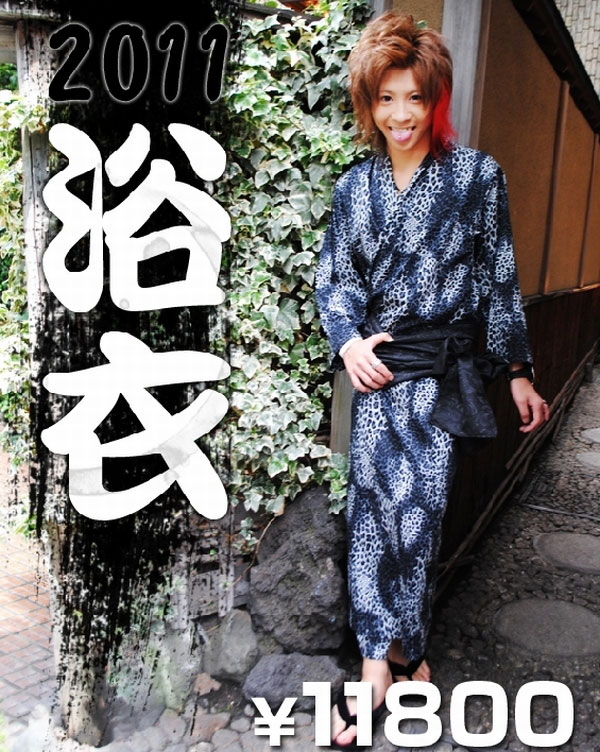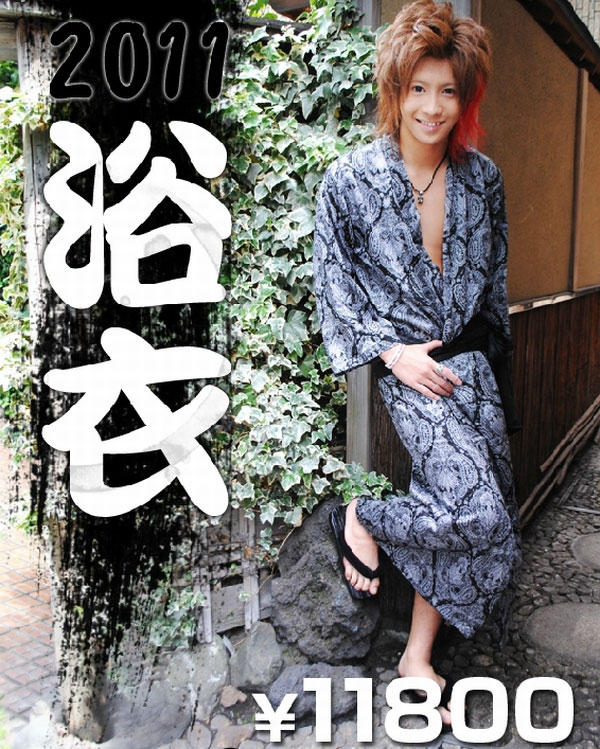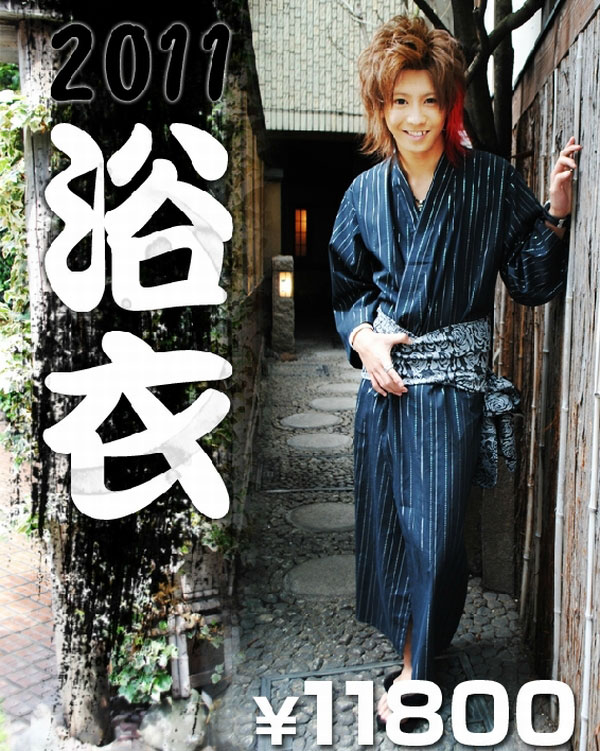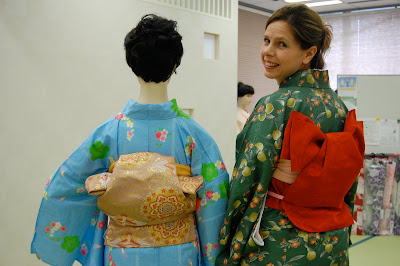6/26/2011
Breaking the Rules: meet Shito Hisayo - ルールを破る:紫籐尚世
My adventures in yukata hunting led me to the most beautiful kimono boutique in Omotesando and the chance to meet designer Shito Hisayo, who started designing her eponymous line over 35 years ago. What makes the designer, and her collection, unique is her approach. Shying away from the traditional use of a single tan (bolt of fabric), Hasayo instead focuses on fabric, pattern and color in an effort to allow women to look slimmer through texture, lines and fabrics.
浴衣探しの冒険中、表参道である美しい着物ブティックの前を通りかかり、そのデザイナーで、35年前から着物デザインをしていらっしゃる、紫糖尚世さんと直接お会いしました。デザイナーとしての彼女とそのコレクションを他とは一段違ったものにしているのは、彼女のアプローチの仕方です。1反の反物から1着の着物をつくるという常識から離れ、尚世さんは生地、柄、と色の組み合わせを意識し、現代の女性の体が最もきれいに見えるように着物をセンス良く工夫していらっしゃるのです。
Hand-made, attention is given to every detail of the kimono, including her own signature nagajuban (under kimono) which is lightweight and sleeveless (the extra layer is incorporated into the lower part of the kimono sleeve). This feature, as well as a very structured eri (collar), which lays down and allows the neck to look more elegant, are all secrets Hisayo employs to slim the wearer and let her appear at her most elegant best.
彼女の着物は、すべて細かいところまでこだわりがたくさんの手仕上げ。特にユニークなのは長襦袢。軽い生地で袖なしで仕立てられているので簡単に着られます。そしてなんと着物自体の袖口に長襦袢の生地が縫い付けられているのです。襟のデザインにも凝っていて、首回りをほっそりとみせてくれるようになっています。このように着る人の美しさをより引き出してくれるデザインの秘密を他にもいっぱい紹介していただきました。
When questioned about waste (traditionally a kimono is a 'zero-waste' garment - meaning that without patterning and cutting and by using a single tan - there is no fabric waste in the construction of kimono), Hisayo was quick to point out that each of her kimono obi comes with additional accent pieces, almost mini-obi, to complement the look and re-use extra fabric. Her gorgeous accessory line including geta and purses, in typical Japanese fashion, also uses excess fabric.
昔から着物のというのは1反の反物を使い切る無駄の少ない衣類です。尚世さんは反物の余った生地でミニ帯やアクセント小物を作ってしまって、無駄が出ないうえに全身コーディネートができるというわけです。下駄や巾着袋などもこうして余った生地や端切れをリユーズしています。
One of Hisayo's kimono or yukata would be a gorgeous asset to any wardrobe (not mine, sadly - as this project is on a budget) - and she is the first kimono designer I've met who is breaking the rules and the result is gorgeous.
尚世さんの着物や浴衣は誰のワードローブにも貴重な1枚になると思います。「着物の1年」は予算が限られていて非常に残念です。ルールを破って素晴らしい作品を制作している、初めて会ったデザイナーです。
6/25/2011
Searching for Yukata - 浴衣探し
The count-down is on.... in a very short time, it will be yukata (lightweight, summer kimono) season! If you've followed this blog for a while, you know that since the beginning, I've been waiting for yukata season. Literally. From the very inception of this project I remember thinking "how hard can it be to wear a kimono? besides, it won't be long until yukata season is here" - those were the days when I thought yukata season started sometime around mid-March (oops!) But come the first of July, it's here, it's here!! And, of course, like all things kimono - I'm having trouble finding something that would fit. The standard "L" size yukata fits a woman up to 163 cms. (have I mentioned I'm 172 cms?) - which wouldn't be a problem except apparently yukata shrink. So the day found me back in Asakusa searching for an ooki (big) yukata. The search is still on.
あと少しで浴衣の時期になりますね!長期間このブログをフォローしていただいている方は、最初のころから楽しみにしていたってご存知なはずですね。本当に、このプロジェクトを思いついたその日から「着物を着るってそんな難しくないんじゃないかな。それに浴衣の季節までそんなに長くないし」と考えていました。だいたい浴衣シーズンは三月ころから始まると思いこんでいた私。7月1日からだったのね!ああ、やっと7月が来た。ところが着物探しではいつも起こってくる問題、私に合う浴衣がなかなか見つからないのです。基準のLサイズは、163センチまでの女性用だと言われています。私は172センチだって言ったかしら?まあ、それだけならなんとかなるのでるけど、浴衣って縮むらしいですね・・・そして結局、大きい浴衣を探しにまたまた浅草へと足が動きました。まだ探し中です。
------
If you live in the Tokyo area, and have caught "The Year in Kimono" bug - and want to give it a try, we are arranging an event in July (near Shibuya station). The event will include a lesson, a yukata and obi (sash) - everything you need (except footwear) for 6,000¥. You can join even if you have yukata and just want a refresher on how to dress yourself (just 2,100¥)! Leave a comment below and we will send you the details by the 10th of July.
あなたも東京に住んで「着物の1年」気分になりました?そんな皆さんへ、7月に渋谷駅の近くで皆様にも参加いただけるイベントを企画中ですよ。浴衣と帯付きの、着つけレッスンで6000円です。すでに浴衣をお持ちの方には、2100円で着つけ復習レッスンもあります。ご興味のある方、7月10日までにコメントを残していただけますとメールで詳細をお送りします。
6/20/2011
Breaking the Rules part II - ルールを破る(パート2)
I've written about it, and thought about it, and invited your comments about it and here it is - breaking the rules part II. Lots of fashionistas, when they think about kimono, think about romanticized images like the one above (taken from a U.K. lingerie site). But the true problem in buying a kimono and wearing it like above is the length. Kimono, if you are ever going to wear it in the fashion the Japanese do, needs the extra inches to 'double down' below the obi (sash) in order to look proper.
皆様、お待たせしました。「ルールを破る」で最初紹介したアイディアをまた考えて、皆様からいただいたご意見も読んで、パート2を書いてみました。(UK のランジェリーサイトで見つけた)上のイメージで想像がつくと思いますが、欧米のファショニスタ達が着物を考えると、変にやりすぎてしまう傾向があると思います。着物を写真ようなコンテンポラリースタイルで着る際に問題になってくるのは丈の長さです。日本式に着物を着るなら、帯の下からはみ出す、その余分な丈(おくみ)も必要です。
What started as necessity (kimono were handed-down through the family, so extra length from the tan (or bolt of kimono fabric) was 'rolled up' and saved for future (taller) generations) has become a necessary requirement for the look. So when you want to break the rules, you are restricted by the length of the kimono.
もともと母から娘へ手渡されていった着物、(もっと背の高い)次の世代が着られるように一反の長さは十分に長くとってありますが、その余分な生地を折って帯の下から見せるおくみも着物姿の特徴になっています。しかしこれがあると、ルールを破りたい時に丈の長さに困ってしまうのです。
But, it was Saturday night, and I wanted to look that that picture above, so I added a necklace and tried to figure out what to do with all the extra fabric (usually hidden and bound by my obi).
けれどもある土曜日の夜、上記の写真のようなテイストで出かけたかったので、着物にネックレスを足し、どのように余分の生地を処理すればいいか色々試してみました…
And it didn't matter how many ways I tried, and how high my shoes were, which belt I added, it looked ridiculous! Verdict: you can't wear a kimono both ways. If you want that lingerie-site look, you need to get the kimono shortened. But know, once you shorten it - you won't be able to wear it in the traditional way. Sadly, in this case you can't have your cake and eat it too (but I'm still going to try)
しかし残念ながら、どんなに高いヒールをはいても、どんなベルトで引き上げても、どうやってみてもダメ!うまくいきません。結論:1つの着物を両スタイルに着れません。ランジェリーサイトの着方をしたければ、着物の丈を短くするしかありません。けれども、一旦切ってしまったらもう伝統的なスタイルには着られません。
残念ですが、この場合は一つを選ぶしかないですね… まだまだ試行錯誤は続きます!
6/17/2011
Learning to dress others - 着つけ師のお勉強
I've been at kimono school and wearing my own kimono since January! And I still love it. I played sports when I was younger, was a brownie then a girl guide, a camper then a camp counsellor, but nothing really compares to the community of kimono school. This is the first time in my whole life where I go to a 'secret girls' place' (no boys allowed) and play dress up, every week!
自分の着物を着て、着物学校へ通うという習慣は1月からずっと続けてきましたが、今でも始めた頃と変わらず大好きです!幼いころはいつもスポーツに参加したり、ブラウニー、ガイド、キャンパー、そしてキャンプカウンセラーまでにもなりましたが、着物学校のコミュニティーとは比べものになりません。だってこれは、人生初めての、毎週ドレスアップする「内緒の女の子クラブ」なんですもん!
I'm nearing the end of my course and I can dress myself so now its time to learn how to dress others. I've mentioned before how difficult tying an obi (the sash) behind your back can be. So you can imagine what it's like to tie an intricate or formal bow. Awwwk! You need help.
もう着物学校のコースの終わりが近づいてきました。自分の着付けはできるようになりましたので、最後に、人に着付けることを学んでいます。前にも言いましたが、自分の後ろにある帯を結ぶことはとても難しいです。なので正式な場に行く時の、華やかな帯をきれいに結ぶにはお手伝いが必要となってきます。
That's when you need a dresser. Of course, I'll never be a dresser, but its been fun to relearn what I know when looking down at myself (or reaching behind myself) and what I have to relearn on someone (or something - lots of it is done on mannequin).
こういう時に着つけ師さんに助けてもらわなきゃいけませんね。私は着つけ師にはなれませんが、自分の後ろでやっていた結び方を、マネキンなど、見えるところでまた練習をできて楽しかったです。
"Real" kimono dressers study for 3+ years! That's why if you've ever been dressed in a kimono - it happens in such a whirlwind. They are not only well practiced but studied. I will never be a 'dresser' and I'm sad to see my days in kimono school days coming to an end.
プロの着つけ師さん達は、3年以上勉強していらっしゃるそうです。あっという間に着つけができてしまうのはさすがですね!練習と経験をたっぷりお持ちなだけでなく、しっかり勉強されたからですね。私はそのような本格的な着つけ師にはなれませんが、着物学校の日々がそろそろ終わってしまうことは寂しいです。
6/14/2011
Marketing Messages - マーケティングについて
この記事では、英語で日本の着物や浴衣のマーケティング方法について書きたいと思います。
If you live in Japan, then at the end of last year, you saw these commercials for kitsuke (kimono classes). In the first commercial, they are admiring a kimono and the boyfriend says he thinks it would be great if she wore it when they meet his parents. She hesitates and it appears like she has forgotten how to properly wear a kimono, so she quickly phones the school to get some lessons.
The second commercial has her getting ready to go to her kimono lesson and the boyfriend commenting on how she seems a lot more excited than when she gets ready to go out with him. These commercials are for a different Kitsuke-school than the one I attend, but an example of the efforts to get girls/women back into kimono.
_____________
Here's a different tactic, a recent campaign shows web-based retailer CRAZE.jp offering the 'cool' Shibuya boys new summer yukata robes served up with a hilarious sales pitch.
 A familiar face, 19-year old model Chihiro Saito – better known as “Chibo” – has been suited up in CRAZE’s 2011 yukata three-piece sets, all of which are priced at 11800 yen (about US$150). Each purchase includes a yukata robe, an obi belt, and wooden geta shoes.
A familiar face, 19-year old model Chihiro Saito – better known as “Chibo” – has been suited up in CRAZE’s 2011 yukata three-piece sets, all of which are priced at 11800 yen (about US$150). Each purchase includes a yukata robe, an obi belt, and wooden geta shoes.
 Aside from the eye-catching leopard print and paisley patterns, what makes these items really stand out is the accompanying ad copy from CRAZE, which reads: "Summer is the most important season for young people,” according to CRAZE. “Do you want to waste this once a year opportunity?” Turns out, the summer festival season is prime time for picking up girls. But even the most ardent of 'cool' guys is going to need a bit of “yukata magic” first to get a shot at the grand prize: summer lovin’.
Aside from the eye-catching leopard print and paisley patterns, what makes these items really stand out is the accompanying ad copy from CRAZE, which reads: "Summer is the most important season for young people,” according to CRAZE. “Do you want to waste this once a year opportunity?” Turns out, the summer festival season is prime time for picking up girls. But even the most ardent of 'cool' guys is going to need a bit of “yukata magic” first to get a shot at the grand prize: summer lovin’.
 Not one to be argued with, CRAZE continues, “The attraction of a yukata is unbelievable. A yukata has an adult sexiness that makes women swoon. The concept behind these items is ‘clothes that a Shibuya 'cool-girl' wants her boyfriend to wear’. We GUARANTEE that you can get a girl with it.”
Not one to be argued with, CRAZE continues, “The attraction of a yukata is unbelievable. A yukata has an adult sexiness that makes women swoon. The concept behind these items is ‘clothes that a Shibuya 'cool-girl' wants her boyfriend to wear’. We GUARANTEE that you can get a girl with it.”

If you live in Japan, then at the end of last year, you saw these commercials for kitsuke (kimono classes). In the first commercial, they are admiring a kimono and the boyfriend says he thinks it would be great if she wore it when they meet his parents. She hesitates and it appears like she has forgotten how to properly wear a kimono, so she quickly phones the school to get some lessons.
The second commercial has her getting ready to go to her kimono lesson and the boyfriend commenting on how she seems a lot more excited than when she gets ready to go out with him. These commercials are for a different Kitsuke-school than the one I attend, but an example of the efforts to get girls/women back into kimono.
_____________
Here's a different tactic, a recent campaign shows web-based retailer CRAZE.jp offering the 'cool' Shibuya boys new summer yukata robes served up with a hilarious sales pitch.




Okay, fine, but what about the yukata itself? Boys are briefly assured that “it is made of good fabric that breathes and keeps you cool even on hot and sweaty days. It is comfortable to wear and easy to enjoy at nighttime.”
Then, CRAZE coldly assesses the target and moves in for the kill. “You must be worried, ‘Am I being too much of a dandy? Does it match my hairdo?’ Don’t worry. This yukata goes well with anything.”
6/09/2011
Summer = new kimono - 夏=新しい着物
I love summer. It's one of my favourite seasons! In kimono fashion there are two versions of summer. Hitoe (single layer kimono) and yukata (cotton kimono). Hitoe is usually silk or polyester (not cotton), is unlined (hence the single-layer) and is worn like kimono (including with socks). It is worn in June and September, when the weather is mild but not too hot. It also has a lighter obi (sash). I found this one at Sayuki-san's shop in Asakusa and loved it for the origami crane design. It's polyester, so will be fine during the rainy season (which will be most of June).
夏が大好きです。一番好きな季節かもしれない!着物の世界では、夏を2つの着物で表現します:一重と浴衣。一重の着物は大抵綿ではなく、ライニングのないシルクかポリエステルで創られてあり、足袋と合わせて、着物と同じように着ます。天気が暖かい時期、6月と9月に着ます。帯も普通の着物より薄いのを付けます。この一重着物は、浅草にある Sayuki さんのお店で見つけました。折紙の鶴のデザインが大好きです。ポリエステルなので、雨が降っても大丈夫です。
6/07/2011
Guest Post by Hiromi Asai - Hiroさんのゲストポスト
This blog project usually has two parts: I write about my activities and adventures in kimono and I also write "reflections on kimono" and ponder the world of kimono. I often wonder why kimono is in decline (read here) and if kimono can be styled or interpreted differently (read here).
普通は2つの流れでこのブログを書いています:着物を着ている時の私のアクティビティや冒険について。または、着物世界を考える「着物について」。現在、なぜ着物が低下しているかについてよく考えますし(読む)、着物の新しいスタイリングや解釈についてもよく考えます( 読む)。
Hiromi Asai, a kimono stylist from New York, graciously submitted the following -
ニューヨークで着物スタイリストとして活躍している、アサイヒロミ(Hiro) さんが以下を提出して下さいました:
Liberate the Kimono
Appeared in LETTERS TO THE INTERNATIONAL HERALD TRIBUNE
Published: March 11, 2011
Kumiko Makihara (“Kimono Lessons,” Meanwhile, March 4) described the typical point of view regarding kimonos in Japan: Most Japanese people believe that the kimono is only a ceremonial dress and that there are strict rules on how and when to wear it.
And as Ms. Makihara writes, many Japanese people don’t know how to properly put on a kimono because they lack basic knowledge of the traditional culture.
Indeed, the kimono has a long history — more than 1,000 years — but most of the rules that the Japanese rely on today were established just 150 years ago, or less. The kimono has been worn much more freely for most of its history.
Unfortunately, the kimono market has been dramatically shrinking, in part because the Japanese seem attached to the rules that prevent wider use of the dress.
As a kimono fashion stylist, I would like the kimono to be recognized as a fashionable garment, not just a traditional or ceremonial dress. Today’s rules for kimono wearing certainly should be taught, and I teach them to my students, but the kimono should be worn without any inhibition.
The kimono should be recognized as a garment that is beyond cultural and ethnic boundaries. It is my hope that people will learn to enjoy wearing the kimono in a more relaxed manner.
Hiromi Asai, New York
------------
着物は長い歴史の中で、日本で華開いた世界でも稀に見る優美なファッションです。
文化や国境を越え、ファッションとして受け入れられる着物には表現の多様さがあり、世界のフォーマルウェアになると信じています。
着物スタイリストとして、ファッションの発信地であるニューヨークから活動を開始しました。様々なテーマや世界観を着物で創造し、ファッションとしての着物を表現していきます。
芝居好きの母の影響で、幼いころから歌舞伎や和のお稽古事が身近な環境で育つ。
大学では、歌舞伎を研究し、国立劇場演出家の織田紘二先生の授業で、歌舞伎の演出や時代衣裳、舞台衣裳にさらに興味を持つ。
時代衣裳の演出について、着物にまつわる文化への理解と所作の勉強も深めたく、
茶道(裏千家 靖国神社行雲亭 桜井宗梅先生)、日舞(西川流宗家 西川箕乃助先生)や能(京都観世流 橋本光史先生)に師事し、稽古を積む。
着物の技術を更に勉強する必要性を感じ、駒込和装学院にて、着付けの技術と和裁の技術を学ぶ。着物の着付け「一級講師(師範)」資格を取得後、プロの着物スタイリストとして活動を開始。
時代衣装の着付を松竹衣裳の笹島寿美先生から学ぶ。
2008年夏から夫の仕事の関係でニューヨークに渡り、9月にKimono Hiro in NYを創業。
海外から着物を見たとき、和がテーマの舞台や催し、特別な席など、限られたところでしか着物は着られないものだという概念が出来ていることを痛感。
ファッションとしての着物の、素晴らしさや表現の多様さを広めたく、全米、全世界に向けて活動。
着物スタイリストとして、いろんなテーマや世界観を着物で表現・創造していく作品作りを中心として活動中。
普通は2つの流れでこのブログを書いています:着物を着ている時の私のアクティビティや冒険について。または、着物世界を考える「着物について」。現在、なぜ着物が低下しているかについてよく考えますし(読む)、着物の新しいスタイリングや解釈についてもよく考えます( 読む)。
Hiromi Asai, a kimono stylist from New York, graciously submitted the following -
ニューヨークで着物スタイリストとして活躍している、アサイヒロミ(Hiro) さんが以下を提出して下さいました:
 |
| credit: MUNALUCHI Bridal Magazine, styled by Hiromi Asai |
Liberate the Kimono
Appeared in LETTERS TO THE INTERNATIONAL HERALD TRIBUNE
Published: March 11, 2011
Kumiko Makihara (“Kimono Lessons,” Meanwhile, March 4) described the typical point of view regarding kimonos in Japan: Most Japanese people believe that the kimono is only a ceremonial dress and that there are strict rules on how and when to wear it.
And as Ms. Makihara writes, many Japanese people don’t know how to properly put on a kimono because they lack basic knowledge of the traditional culture.
Indeed, the kimono has a long history — more than 1,000 years — but most of the rules that the Japanese rely on today were established just 150 years ago, or less. The kimono has been worn much more freely for most of its history.
Unfortunately, the kimono market has been dramatically shrinking, in part because the Japanese seem attached to the rules that prevent wider use of the dress.
As a kimono fashion stylist, I would like the kimono to be recognized as a fashionable garment, not just a traditional or ceremonial dress. Today’s rules for kimono wearing certainly should be taught, and I teach them to my students, but the kimono should be worn without any inhibition.
The kimono should be recognized as a garment that is beyond cultural and ethnic boundaries. It is my hope that people will learn to enjoy wearing the kimono in a more relaxed manner.
Hiromi Asai, New York
------------
着物は長い歴史の中で、日本で華開いた世界でも稀に見る優美なファッションです。
文化や国境を越え、ファッションとして受け入れられる着物には表現の多様さがあり、世界のフォーマルウェアになると信じています。
着物スタイリストとして、ファッションの発信地であるニューヨークから活動を開始しました。様々なテーマや世界観を着物で創造し、ファッションとしての着物を表現していきます。
芝居好きの母の影響で、幼いころから歌舞伎や和のお稽古事が身近な環境で育つ。
大学では、歌舞伎を研究し、国立劇場演出家の織田紘二先生の授業で、歌舞伎の演出や時代衣裳、舞台衣裳にさらに興味を持つ。
時代衣裳の演出について、着物にまつわる文化への理解と所作の勉強も深めたく、
茶道(裏千家 靖国神社行雲亭 桜井宗梅先生)、日舞(西川流宗家 西川箕乃助先生)や能(京都観世流 橋本光史先生)に師事し、稽古を積む。
着物の技術を更に勉強する必要性を感じ、駒込和装学院にて、着付けの技術と和裁の技術を学ぶ。着物の着付け「一級講師(師範)」資格を取得後、プロの着物スタイリストとして活動を開始。
時代衣装の着付を松竹衣裳の笹島寿美先生から学ぶ。
2008年夏から夫の仕事の関係でニューヨークに渡り、9月にKimono Hiro in NYを創業。
海外から着物を見たとき、和がテーマの舞台や催し、特別な席など、限られたところでしか着物は着られないものだという概念が出来ていることを痛感。
ファッションとしての着物の、素晴らしさや表現の多様さを広めたく、全米、全世界に向けて活動。
着物スタイリストとして、いろんなテーマや世界観を着物で表現・創造していく作品作りを中心として活動中。
6/06/2011
Meeting the White Geisha - Sayukiさんと合いに
Last week I headed off to Asakusa to meet the 'White Giesha' - although it sounds like something out of a fairy tale, there really is a foreign geisha. Sayuki took an MBA at Oxford before turning to social anthropology, and specializing in Japanese culture. She has spent half of her life in Japan, graduating from Japanese high school, and then becoming the first white girl to enter Japan’s oldest university, Keio.
先週、白人の芸者さんと合いに浅草に行きました。物語のように聞こえますが、本当に外国人の芸者がいます。オックスフォード大学にて MBA を取得し、日本文化を中心とした社会人類学を研究されているそうです。人生の半分位は日本で過ごし、日本の高校を卒業した後、京王大学に入学した初外国人だったそうです。
Sayuki has lectured at a number of universities around the world, and has published several books on Japanese culture. She is also an anthropological film director with credits on NHK, BBC, National Geographic Channel programmes.
Sayuki さんは世界中の大学で講義したり、日本文化についての本も出版されました。NHK, BBC, ナショナルジオグラフィクチャンネルで放送されたことのあるような社会人類学の映画監督でもある女性です。
And she's opened her own shop in Asakusa, one of the oldest and most traditional neighbourhoods in Tokyo. I wanted to find out how long it takes a geisha to get dressed, see how many kimonos she owns and see if I could get a hitoe (single-layer) kimono to wear for June and September.
そして今は東京で最も古くて伝統的な近所の一つ、浅草でお店をオープンされました。芸者さんが着付けするのにどのくらいの時間が掛かるのか、また着物を何着持っているのかを知りたかったです。6月と9月に着る一重の着物も探しに行きました。
The store has lots to draw kimono fans, both Japanese and foreign. Kimono Beginners can buy a "full set" of underwear including footwear for 15,000 yen at the shop. Then If you add a recycled kimono and a recycled obi from 2000 yen upwards you have a full set of kimono for around 20,000 - 30,000. Sayuki and her team can dress you in the shop and teach you how to do it, and you can take your full kimono outfit home with you. It is common for groups to head to the shop and then to all go out to lunch together at a tea-house.
外国人にも日本人にも魅力的なお店だと思いました。着物ビギナーにとっては、着物と帯から草履までの「一式セット」がとても便利だと思います。リサイクル品であれば、2万円程度で買えます。紗幸さんと彼女のチームが、お店で着付けを教えてくれますし、そのまま町や家に帰れます。グループ団で訪問する場合は、お店での着付け後、皆で茶店によってお食事をすることもできるそうです。
Sayuki's tsukeobi: the geisha obi that you can tie yourself in 3 minutes. Anyone can bring their own obis to the shop and get them made into a tsukeobi for 3150 yen (Sayuki says this is helpful because 100% of Japanese women have obis at home though only 8% can now tie them). She also says this is her secret to getting fully dressed in under 10 minutes!
紗幸の付け帯:たった3分で結べる芸者さんの帯。自分の帯をお店に持って行けば、3150円で付け帯に加工してもらってそのまま家の持って帰れます。Sayuki さんによると、日本の女性は全員家に帯がありますが、8%しか結ぶことができないそうです。この帯は、紗幸さんの10分以下の着付け時間のヒミツでもあるそうです!
Lastly, anyone can send Sayuki-san a box of the kimono they have at home that they may have inherited and don't know what to do with, and Sayuki and her team can provide advice on what you have, what you need to add, and coordinate some new ensembles for you. All ways to make kimono wearing as easy as possible.
最後に、相続した着物をお持ちの方も多いと思いますが、お持ちの着物を紗幸さんに送れば、彼女からそれをどのように着ればいいか、またコーディネートのアドバイスも貰えるのです。なるべく着物を着やすくしてくれる、すべてのことを。
Under her watchful eye, I was suited up in a hitoe (single layer) kimono, including summer underwear, obi (sash), obijime (sash tie) and obiage (silk scarf) for about 15,000 yen.
紗幸さんの指揮によって夏用の襦袢に一重の着物、帯、帯締め、そして帯下げまで付けていただきました。全部で15000円位でした。
紗幸さんの指揮によって夏用の襦袢に一重の着物、帯、帯締め、そして帯下げまで付けていただきました。全部で15000円位でした。
This makes my 6th kimono (one for every month of the project) now. As for Sayuki-san - as a geisha she requires so many more. She has around 100!
これで私の着物コレクションの6着目になります!このプロジェクトの月と一致しますね。しかし芸者の 紗幸さんはもっともっと必要です。100枚位持っているそうです!
これで私の着物コレクションの6着目になります!このプロジェクトの月と一致しますね。しかし芸者の 紗幸さんはもっともっと必要です。100枚位持っているそうです!
6/03/2011
Reflections on Kimono - 着物について
So imagine this; you've been to the doctor and to the gym and now you are rushing to put on your kimono to go grocery shopping before it rains but you can't get your otaiko masubi (drum bow) right. Perspiration is breaking out on your upper lip, you are so frustrated you might cry and you think "if I don't get it this time, I give up." And then like magic, it all comes together, you walk outside and people start to smile at you and greet you and say things like "oh, so beautiful!"
想像してみてください。お医者さんのところに行って、ジムに行って、雨が降って来る前にスーパーに行けるよう、慌てて着物を着ようとしているが、お太鼓結びがなかなかうまく行かない。上唇に汗が出てきて、フラストレーションが溢れてきて、もう泣き出しそうな状態で「今度失敗したらもう諦める!」という状況。すると魔法のようになんとかなって、外に出ると人が笑顔を向けてくれたり、「あら、素敵」などとすれ違いに言ってくれる。
The transformation was so sudden, my husband remarked "this kimono is like a super-hero costume! You put it on, and immediately you become 'beauty woman'! You just need a super-power!" Alright, I'm not exactly a super-hero, but he is right. Regardless of how hard it is to get the kimono perfect sometimes or how tired I feel, the Japanese reactions always buoy me and really lift my spirits. (If you missed it, you can read about the opposite effect kimono has on Canadians here.)
この変身があまりに急で、主人が「この着物、ヘロインの衣装みたいじゃない?!着たとたんに『ビューティーウーマン』になるね。スーパーパワーも必要じゃない?」とある日言いました。まあ、スーパーヒーローからはかなり遠いけれど、主人の言葉に真実もあります。どんなに疲れていて、着付けがうまく行かなくてイライラしていても、着付けさえ終えて、日本人の反応(カナダ人の反応はこちら)を感じると、すぐに気分が上達します。
Yesterday I heard comments like / 昨日はこういう言葉を頂きました:
"You are beautiful, even from behind!" Which sounds funny as I write it, but I knew she meant that I had gotten my otaiko masubi (drum bow) right. 「後ろから見てもきれいですね!」書くとちょっと可笑しいですが、帯の結び方がきれいにできたという意味だと分かりました。
"Edo Blue makes me happy!" 「江戸ブルー大好き!」
"So beautiful!" 「美しい!」
So, it's all got my husband wondering. Two things, actually. Firstly, he wonders if the same thing would happen if he were to put on kimono. Would people rush up to him and say "oh, so handsome!"
And secondly, if there is a 'super-hero'/ beauty costume in Western culture? One where the moment you put it on you go from being a tired, run-of-the-mill person - to eye-catching! Do we have one? I don't think so.
Oh, kimono - how lovely you truly are!
主人も考え始めたそうです。2つのことを。1つは、もし彼が着物姿で街に出たら同じような反応を招くかどうかを。擦れ違いに人々が「なんとハンサム!」などと言ってくれるかどうか。
そして、欧米にはこのような「スーパーヒーロ」衣装はあるのかどうかを。着た途端に、疲れた普通の人が、人目を引くような存在に変身するような服。あるかしら?ないと思います。
着物って、なんと素晴らしいもの!
Subscribe to:
Posts (Atom)






















